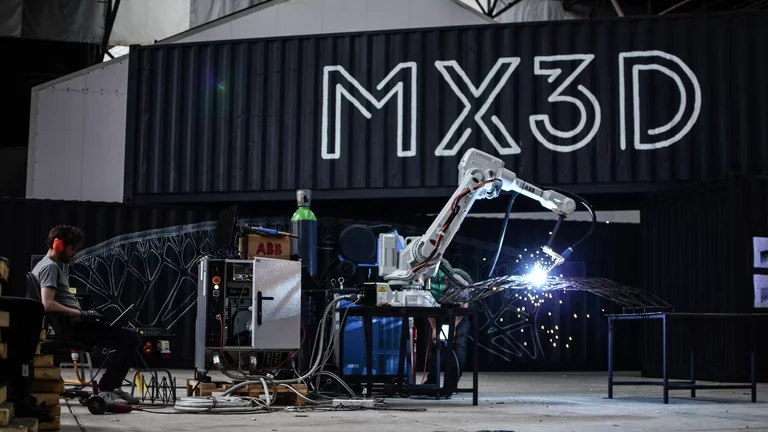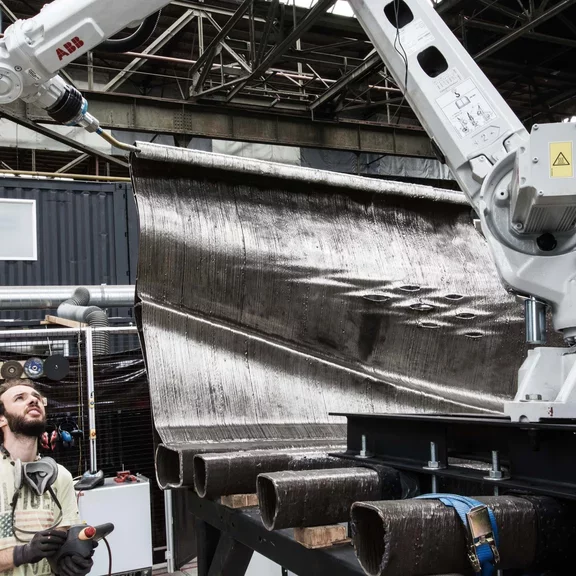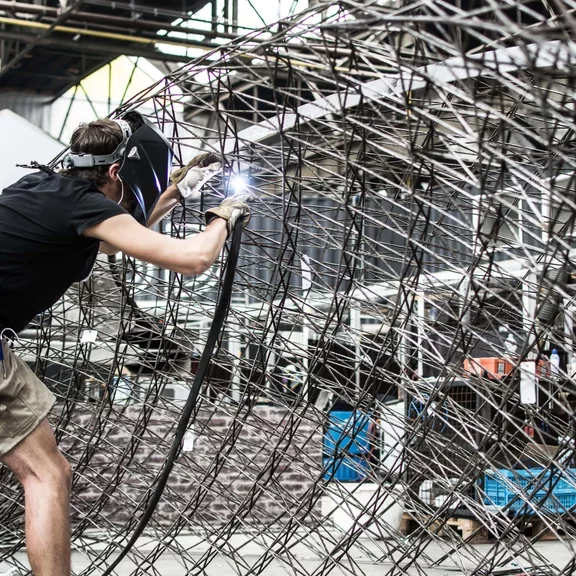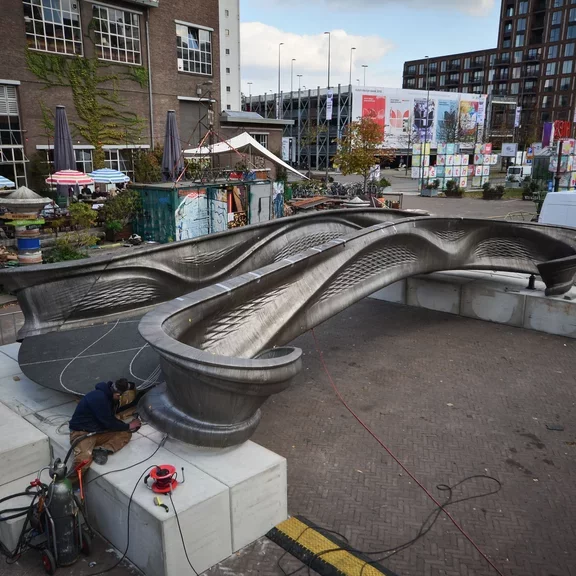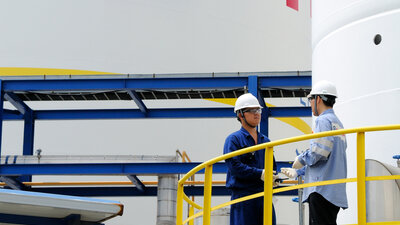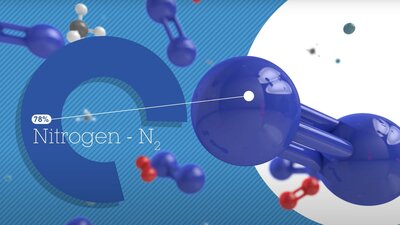What better testimony to the power of 3D printing technology than a stainless-steel footbridge that bears the weight of thousands of citizens, every day? This was the idea behind MX3D, a Dutch technology start-up founded in 2015 to print large freestanding objects in metal. Installed over the Oudezijds Achterburgwal canal in Amsterdam in July 2021, the MX3D bridge is also an inspiring demonstration of open innovation with Air Liquide.
Collaborative innovation creates a first-of-its-kind bridge
To make this dream a reality, MX3D worked with a variety of industrial partners, including Air Liquide. As Gijs explains, "They were a logical partner because we were not metallurgists or specialists in welding, so we were looking for people who could offer this expertise." Air Liquide conducted testing at its Paris Innovation Campus to find the best type of welding gas composition and flow to use in the fabrication process. Experts from the Group also provided practical support for MX3D’s four-robot factory installation.
MX3D wanted to avoid the kind of complex intellectual property issues that can break down collaboration, so throughout the process, an open innovation approach was taken. "We just said, ‘OK, let’s collaborate on this and see where it can go. Both parties are allowed to learn and we hope both parties get value from it.’ It worked well."
Promising applications
For Air Liquide, this R&D collaboration represents an important step forward for its investment in the promising additive manufacturing (industrial 3D printing) market. As Fabien Januard, ALTEC expert in Automotive & Fabrication for Air Liquide, explains, "The prospects for additive manufacturing are gigantic—similar to the advent of laser technology in the 1980s.” Noting annual growth of 20-30%, he says, "Additive manufacturing is really at the heart of Industry 4.0. It enables automated production on demand, based on 3D models." By increasing design freedom that would be too difficult and costly with traditional manufacturing, and by making more efficient use of materials and reducing time to market, the approach simplifies logistics to generate significant gains in terms of costs, time and environmental footprint.
As for MX3D, Gijs says the company’s ultimate goal is to "create the tools other people need so that the next time a bridge is printed, it is done by a bridge expert who knows about the expanded capabilities in product design that this additive manufacturing technology enables for the industry.” Commenting on MX3D’s turnkey 3D printing unit, which is now available to clients, he says, "That’s where our future lies. We hope the freeform availability we’ve introduced is something others can use as well."
The MX3D bridge at a glance
- The world’s first 3D-printed stainless steel bridge and one of the largest 3D-printed objects in existence
- Located over the Oudezijds Achterburgwal canal in the center of Amsterdam
- 12 meters long and 6 meters wide
- 6 metric tons of stainless steel
- Manufactured by four robots
- Designed by Joris Laarman Lab
- Partners: Air Liquide, ABB, AMS Institute-TU Delft, Arup, ArcelorMittal, Autodesk, Heijmans, Lenovo, Oerlikon and Plymovent
Additive manufacturing is defined as building 3D-modelized objects from the ground up, layer by layer, instead of using machines to join prefabricated parts. Air Liquide provided MX3D with expert advice on arc welding and the suitable welding gases. Argon, nitrogen, helium and other industrial gases play a crucial role along the value chain of all additive manufacturing processes:
- Gas atomization to produce metal powders
- Gas inerting to extrude metal wires
- Heat treatment atmospheres
- Gas shielding atmospheres for additive manufacturing machines
These gases are essential to prevent corrosion and reduce porosity forming and stress cracking quality risks, especially under high heat processes.
